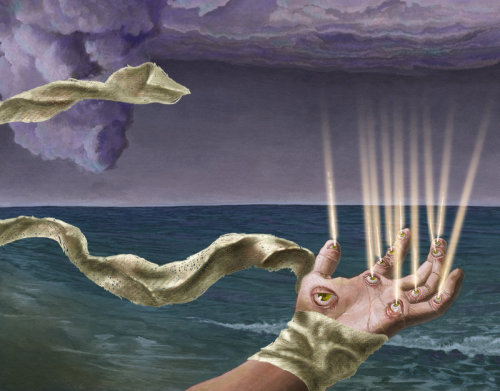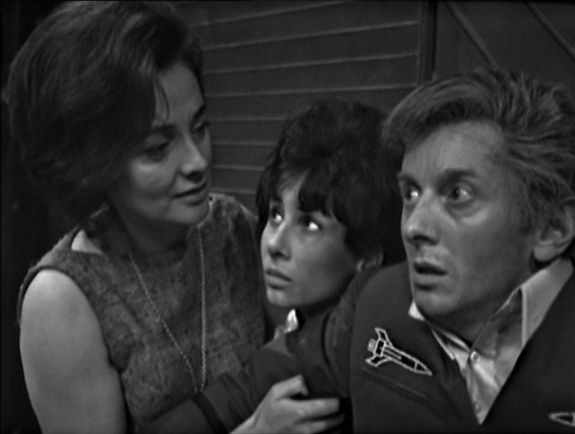Night Shift
continues in much the same vein as before, providing chilling accounts of the
ordinary, with some paranormal or alien plots thrown in for good measure.
 Sometimes They Come
Back is a horrific tale of a man haunted by ghosts – both literal and
figurative – from a night when he was younger and a group of boys killed his
older brother. Jim Norman is an English
teacher – for a change – troubled by the incident involving his brother when he
was nice years old, walking home and being jumped by a group of ruffians with a
switchblade knife. After he starts a new
job in a new town, he is terrified to come face-to-face with one of the perpetrators,
who somehow has not aged a day since the incident. As more and more pupils disappear from his
class, to be replaced with all of those responsible for his brother’s death, he
realises that he must face his demons once and for all. What is startling about this short story is
the fear it produces, not only of others, but of the power within each of
us. He summons the spirit of his
brother, who deals swiftly with the attackers – but it ends on a haunting line
that whilst you can summon the dead, and “perhaps cause them to do your work...
But sometimes they come back.” He is
still haunted, even after all he has been through, by the thought that “maybe
the nightmare wasn’t over after all”.
Sometimes They Come
Back is a horrific tale of a man haunted by ghosts – both literal and
figurative – from a night when he was younger and a group of boys killed his
older brother. Jim Norman is an English
teacher – for a change – troubled by the incident involving his brother when he
was nice years old, walking home and being jumped by a group of ruffians with a
switchblade knife. After he starts a new
job in a new town, he is terrified to come face-to-face with one of the perpetrators,
who somehow has not aged a day since the incident. As more and more pupils disappear from his
class, to be replaced with all of those responsible for his brother’s death, he
realises that he must face his demons once and for all. What is startling about this short story is
the fear it produces, not only of others, but of the power within each of
us. He summons the spirit of his
brother, who deals swiftly with the attackers – but it ends on a haunting line
that whilst you can summon the dead, and “perhaps cause them to do your work...
But sometimes they come back.” He is
still haunted, even after all he has been through, by the thought that “maybe
the nightmare wasn’t over after all”.
Strawberry Spring
is a bit of a hit-and-miss story, an account of a serial killer in the vein of
Jack the Ripper walking the foggy nights on a University campus. Told from the perspective of one of the
students on campus, the cliff-hanger is somewhat predictable, showing that
perhaps it was an unreliable first-person narrative after all.
As in Battleground before
it, The Ledge tells the story of a
man, forced by the husband of his beloved, to compete in a “wager” for money,
freedom and the woman. The narrator,
Norris, is a tennis coach who has fallen in love with Cressner, a man from the “Organisation”
– much like the anti-hero from Battleground
– and is challenged to walk around the edge of the building, forty-odd
stories up. With no choice but to do it
or face life in prison, he accepts the wager. It is a Hitchcockian thriller, one man facing
his fears for all that he holds dear.
The kicker here is in the ending, where the truth comes out and Cressner
is forced to do the same thing, with the open ending “Cressner said he’s never
welshed on a bet – but I’ve been known to”.
 One of the most obscure and disturbing stories in this
collection is The Lawnmower Man,
thankfully nothing like the dreadful film created and apparently inspired by
the short story – a claim which King refutes vehemently, and took the
publishers of the film to court over.
Principally about a man realising he is unable to continue mowing his
own lawn after an horrific event involving a neighbour’s cat and hiring help,
it centres on the so-called Lawnmower Man, a huge man with a tremulous stomach
and bizarre methods. The description of the
Lawnmower Man is disgusting, but we are lulled into a false sense of security
as Harold realises “now he had placed the man, and everything was alright”. The scenes on the lawn, however, are anything
but alright – the eponymous grasscutter is naked, devouring all that the
lawnmower automatically produces as it mows the lawn, following it on hands and
knees as his stomach swells, green juices running down his chin. The description is nauseating, and the
explanation is bizarre – the boss, “Pan”, likes things to be done this way...
One of the most obscure and disturbing stories in this
collection is The Lawnmower Man,
thankfully nothing like the dreadful film created and apparently inspired by
the short story – a claim which King refutes vehemently, and took the
publishers of the film to court over.
Principally about a man realising he is unable to continue mowing his
own lawn after an horrific event involving a neighbour’s cat and hiring help,
it centres on the so-called Lawnmower Man, a huge man with a tremulous stomach
and bizarre methods. The description of the
Lawnmower Man is disgusting, but we are lulled into a false sense of security
as Harold realises “now he had placed the man, and everything was alright”. The scenes on the lawn, however, are anything
but alright – the eponymous grasscutter is naked, devouring all that the
lawnmower automatically produces as it mows the lawn, following it on hands and
knees as his stomach swells, green juices running down his chin. The description is nauseating, and the
explanation is bizarre – the boss, “Pan”, likes things to be done this way...
Quitters, Inc. is
a fantastic piece on the power of addiction and the lengths to which some go to
manage their own will power. Ostensibly
through emotional blackmail and the threat of physical danger, a company
ensures that people quit smoking – for if they don’t, their loved ones will be
tortured and maimed, and they will be murdered if they lapse more than nine
times. Whilst it is an outrageous
premise, deplorable considering the stance on human rights it neglects, it
works fantastically well. After their
treatment, the ‘victims’ feel hugely improved, and are responsible for
spreading word of the company by word of mouth. The scenes within the office, as Mr Donatti
proclaims the truth about Romanticism and Pragmatism, are exquisitely crafted. This isn’t horror – it is a psychological warning
which rings true throughout – worryingly so.
The next story sees King return to his typical genre – I Know What You Need is the tale of a
girl wooed by a boy’s apparent knowledge and understanding about everything to
do with her, and pleasing her exactly as she wants. Following her first meeting, she is haunted
by the thoughts of Edward Jackson Hamner Jr, and following the death of her
fiancé in a car accident, falls utterly in love with him. Of course, there is more to it than meets the
eye, and the discovery of voodoo dolls and mystical tomes in his wardrobe
proves that he was manipulating her all along, having loved her since he first
saw her in primary school years before, but who she has no memory of. The sense of eeriness around Edward’s
character is fantastic, as his past is dragged up by Beth’s roommate
Alice. Her exclamation that it is not
love, rather “rape”, is disturbing. When
she invades his home, with doubts in her mind, there is a whisper of The Shining about it, as she recalls the
Grimm tale of Bluebeard and his wives.
Likewise, it harks back to Strawberry
Spring’s locations, set on the same campus.
 Children of the Corn is
probably King’s best known work from this selection of stories, principally due
to the incredibly good film adaptation – a young couple stumbling across a town
devoid of adults and wrapped up in religious mania – but here it is shorter,
more succinct and as such even tenser.
Unlike in the film, the couple in question are not a loving couple, but
a bitter, resentful pair, desperately trying to make their marriage work by
spending some quality time together, knowing full-well that it will make no
difference whatsoever. From the discovery
of the dead child on the road, through to their trip into Gatlin, their
marriage deteriorates further and further – where the tragedy should have
brought them together, it is the stubbornness of each party which causes the
rift to widen and as such leads to their demise. In particular, Burt’s stubbornness to accept
that his wife, Vicky, was right all along leads to her being trapped in the car
as the children swarm, armed with jack-knives, rocks and hammers – “Rural
weapons”. Dressed in Quaker clothing,
they sacrifice the adults to “He Who Walks Behind the Rows”, a concept which
will be further expanded upon in The
Stand.
Children of the Corn is
probably King’s best known work from this selection of stories, principally due
to the incredibly good film adaptation – a young couple stumbling across a town
devoid of adults and wrapped up in religious mania – but here it is shorter,
more succinct and as such even tenser.
Unlike in the film, the couple in question are not a loving couple, but
a bitter, resentful pair, desperately trying to make their marriage work by
spending some quality time together, knowing full-well that it will make no
difference whatsoever. From the discovery
of the dead child on the road, through to their trip into Gatlin, their
marriage deteriorates further and further – where the tragedy should have
brought them together, it is the stubbornness of each party which causes the
rift to widen and as such leads to their demise. In particular, Burt’s stubbornness to accept
that his wife, Vicky, was right all along leads to her being trapped in the car
as the children swarm, armed with jack-knives, rocks and hammers – “Rural
weapons”. Dressed in Quaker clothing,
they sacrifice the adults to “He Who Walks Behind the Rows”, a concept which
will be further expanded upon in The
Stand.
The next story, along with the final one, seems so unKing that they seem to have no place
in this collection whatsoever, and yet they are two of his finest pieces. Where others rely on shock and horror to
create discomfort in the reader, here it is the breakdown of the family unit,
and guilt over lack of connection, which preys on the reader’s
sensibilities. The Last Rung on the Ladder tells the tale of a brother and sister brought
together by courage, as they perform daring stunts in the hayloft of their
barn. When the ladder collapses, leaving
Kitty dangling seventy feet above the bare wooden floor, it is the speed of the
brother’s quick-thinking which saves the girl from certain death. This act brings the two closer together than
ever before, but it is the gradual distance – which Larry feels responsible for
– which has torn the two apart again, and the suicide note from Kitty at the
end of the story is filled with remorse for a life wasted – “it would have been
better for me if that last rung had broken.”
It is hauntingly desolate.
The Man Who Loved
Flowers is a short and bittersweet tale of a man in love, buying a gift for
his beloved before meeting her in a dark alleyway, and smashing her skull in
with a hammer. She isn’t his Nora, and
never will be – but he is trapped in a never-ending charade where he goes to
see her anyhow. It is depressingly
vivid, a tale of the broken-hearted, and the language used is particularly
effective – it is described in simple, gentle prose, with heavy use of
repetition for dramatic effect – the “spill of flowers fell out of his hand,
the spill spilled... spilling red, white, yellow tea-roses” along with the
blood of the innocent young girl.
One for the Road works
as an effective end-note for ‘Salem’s Lot,
reinforcing the work of Ben and Mark at the end of that novel. Set during a blizzard some years after the
novel, in a neighbouring town, it is a tale of courage as two locals go out to
face the demons of the town in the hopes of saving a young family. The descriptions of both mother and child,
beautiful and perfect in their death, standing “on top of the snow, no tracks
in any direction” are superb.
The last story in the novel shows the true versatility with
which King can write – as with The Last
Rung on the Ladder, The Woman in the Room features nothing atypical of the
horror genre, and yet is still haunting in its desolate description of the love
of a family, and the hardship faced by a son who wishes to put his mother out
of her cancer-enforced misery. The
disconnected narrative flows through a series of events, leaving one to move
onto another event with flickering ease, like the disconnected thoughts of
someone in their final moments. He hates
that he must watch his mother in her endless suffering, paralysed and
uncomprehending in her final days, weeks or years, and so decides to commit
euthanasia. Matricide, even, The love which he has for this shell of a
woman, this ghost in her bedroom, is what makes the story all the more poignant
– and after the pills are administered, that he considers forcing her to vomit
them back up, to save her, before realising “he could never hit his mother” is
an emotional tour-de-force.

































